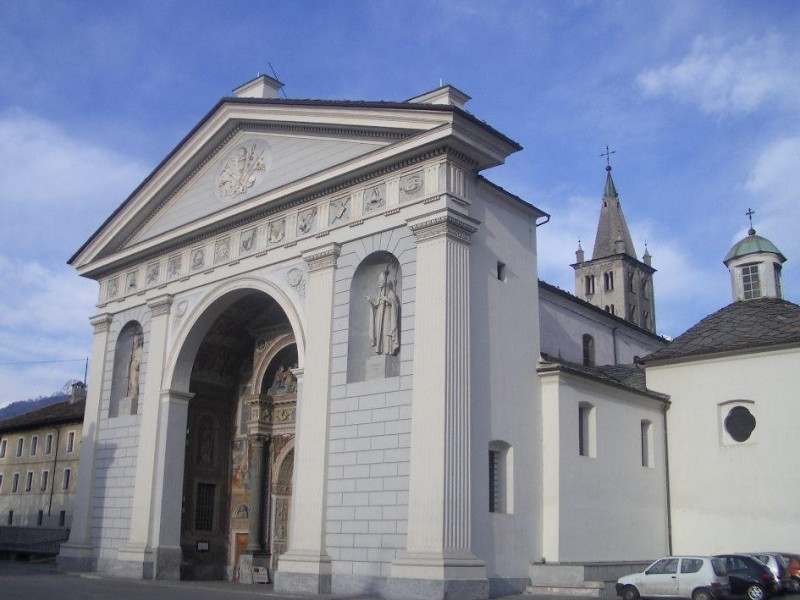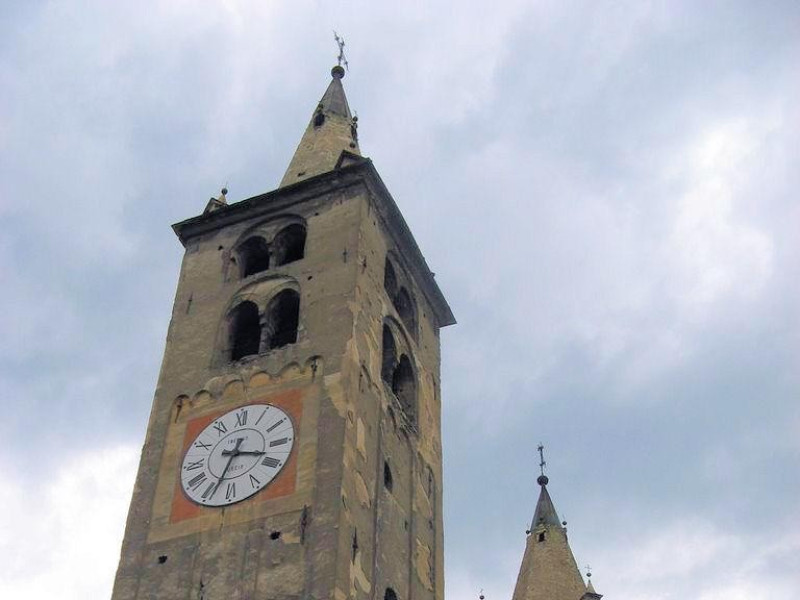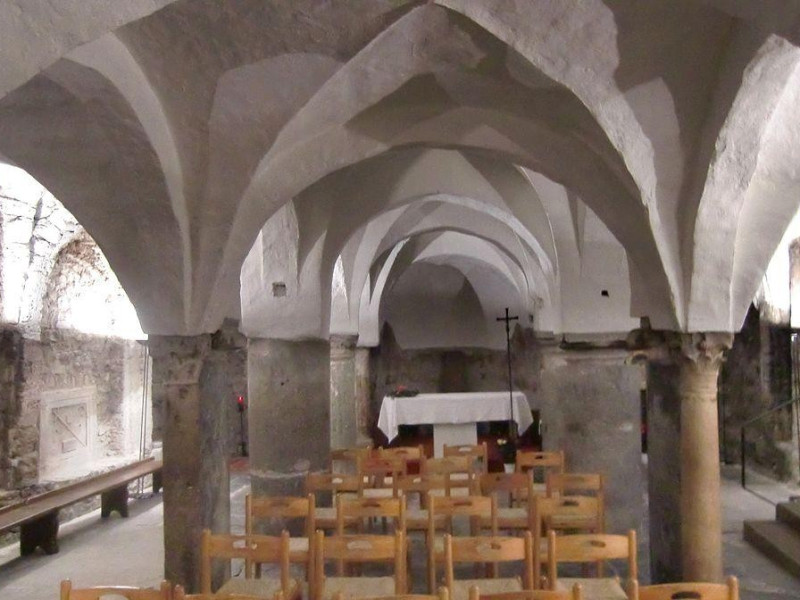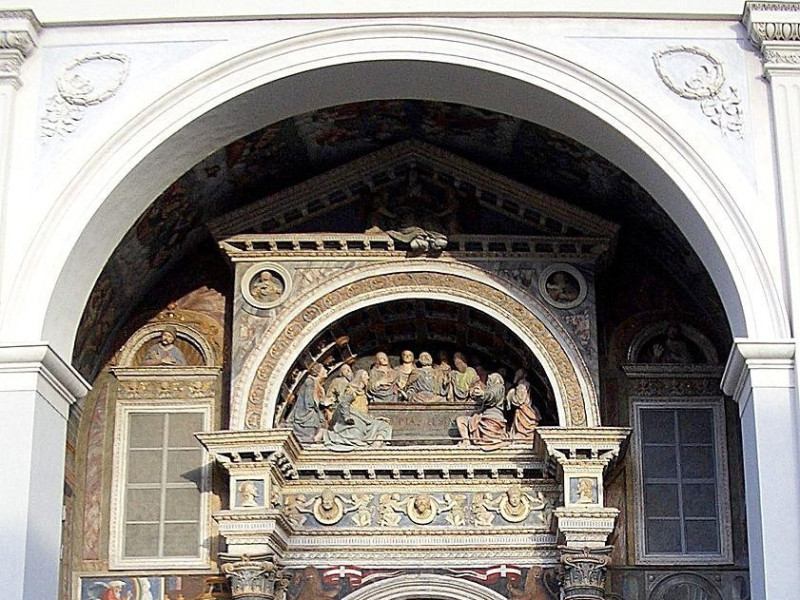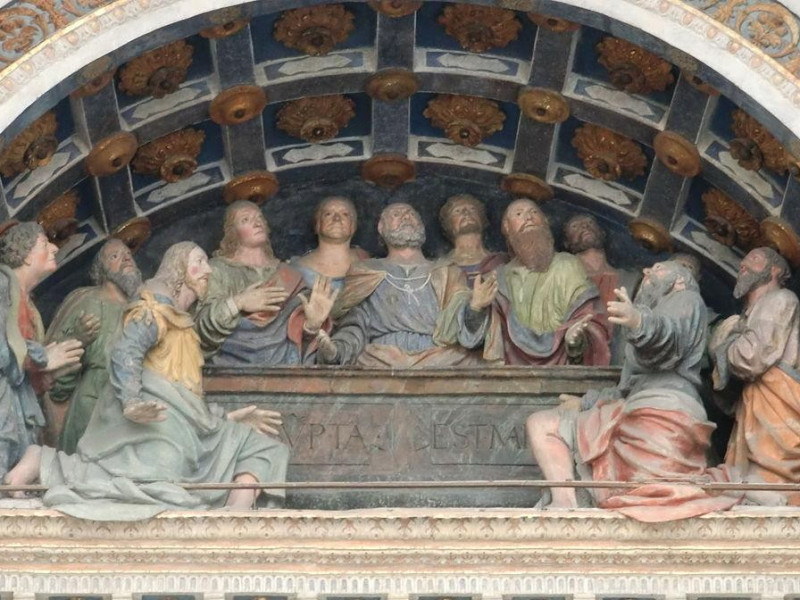Cattedrale di Santa Maria Assunta e San Giovanni Battista (Duomo)
The origin of Aosta Cathedral dates back to initial phases of diffusion of Christianity in the valley, towards the end of the fourth century. Church was completely rebuilt in the eleventh century at the behest of Anselmo I. Of ancient Romanesque basilica much has been lost in relation to many subsequent interventions: remain two bell towers to the east, the mosaics of the choir, the Crypt with interesting Medieval capitals and, in particular, surviving frescoes. Between the thirteenth and sixteenth century a number of architectural and decorative interventions, supported by prestigious bishops and noble families from Valle d'Aosta, deeply modified the physiognomy of Cathedral. In 1397 Bishop Giacomo Ferrandini did make a big wooden crucifix of intense drama (still visible); even during the sixteenth century took place the construction of Chapel of Lords of Cly (about 1570-80), located to the right of front door, with Mannerist style frescoes. Upon entering, after having taken a look at neo-Classical facade, deserves attention previous Renaissance facade preserved inside the atrium, which is striking for richness of polychrome and the combination of frescoes and terracotta groups. Inside the visitor is immediately struck by the great suspended crucifix and the colors of stained glass windows of the nave, built in the late fifteenth and 1523. Covered the right aisle, a staircase leads down into the Crypt, the oldest part of Cathedral, witness to "basilica of Saint Anselm's" almost completely preserved. rich in works beginning with two mosaics floor on the left of Crypt is reached presbytery. From the left nave you can access Cloister.
